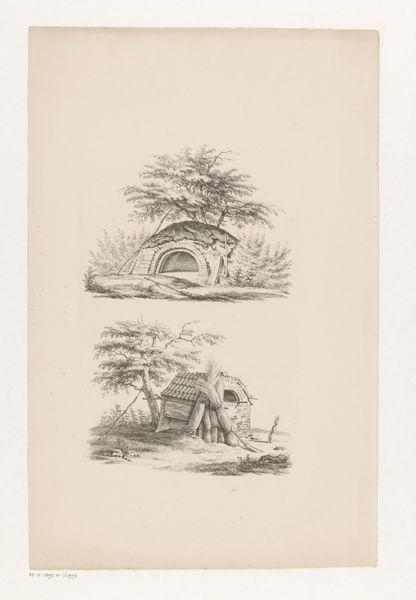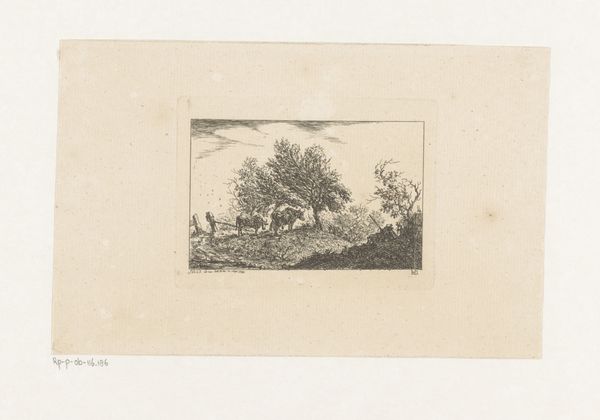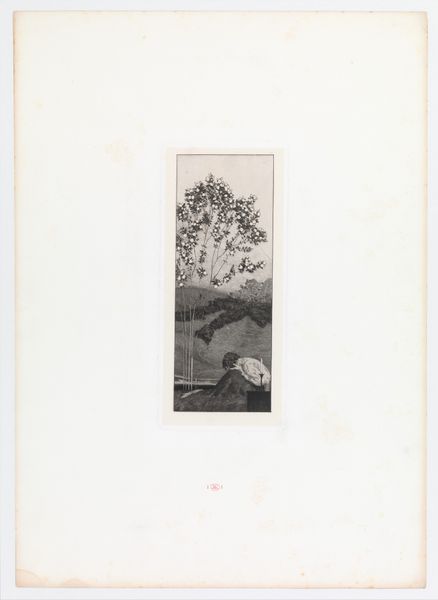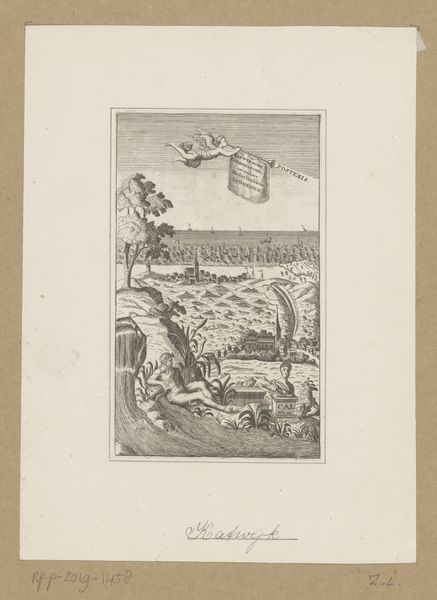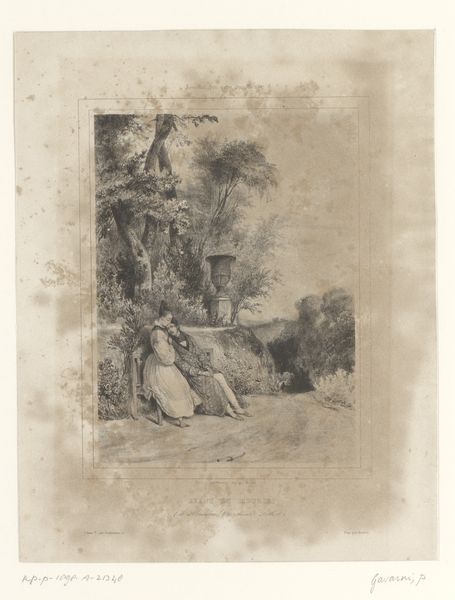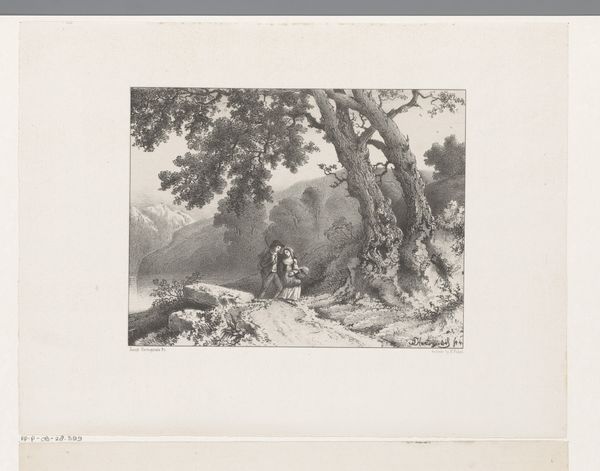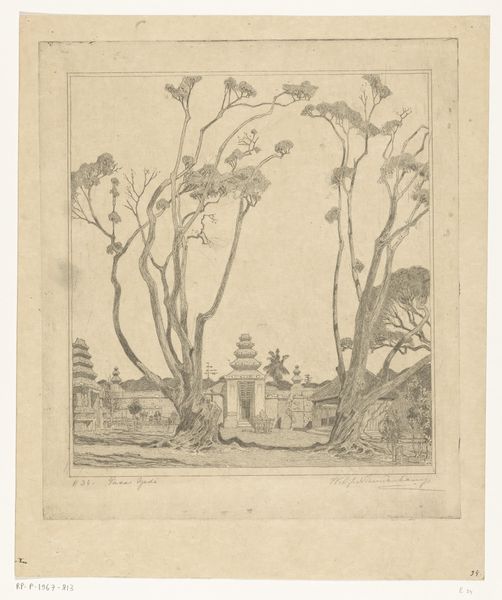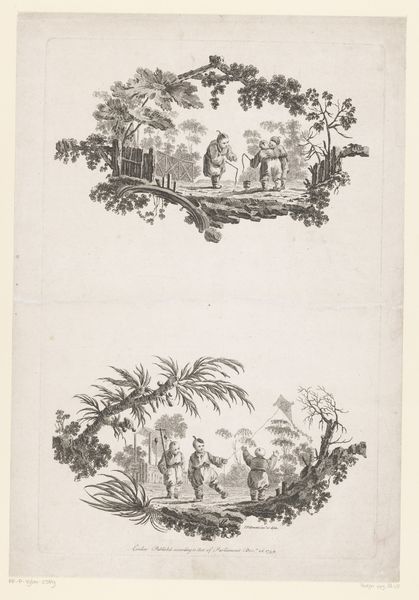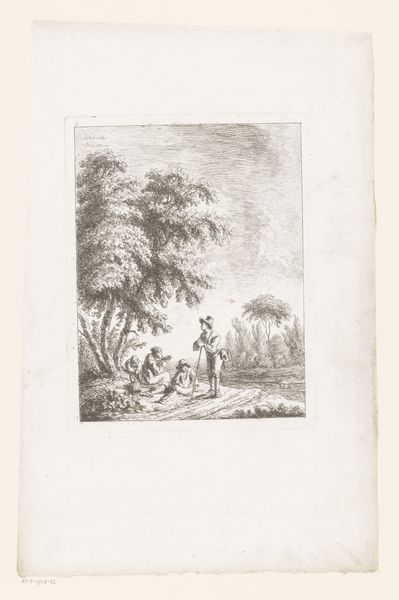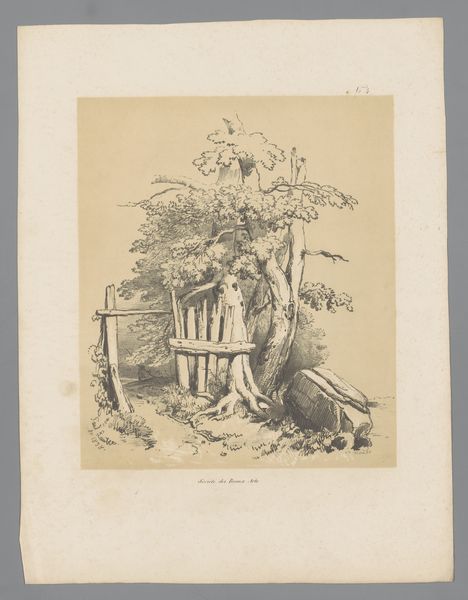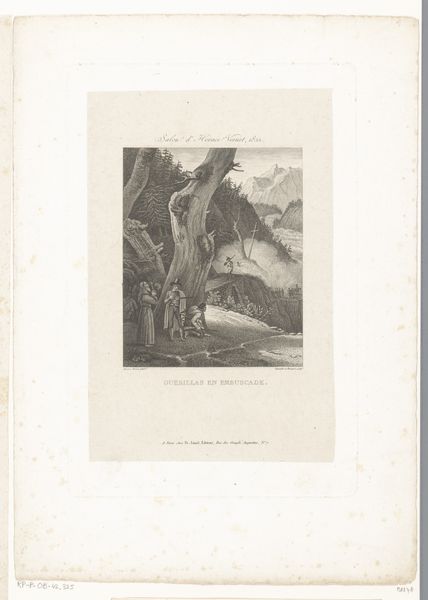
drawing, print, etching, paper
#
drawing
#
narrative-art
# print
#
etching
#
figuration
#
paper
#
symbolism
#
genre-painting
#
realism
Dimensions: height 198 mm, width 128 mm
Copyright: Rijks Museum: Open Domain
Editor: So, this is Felicien Rops's etching "Man en kind met kruiwagen," created in 1875. It strikes me as rather bleak, capturing a very quotidian scene with what feels like a strong sense of the working class. What can you tell me about it? Curator: This etching offers a potent glimpse into 19th-century social realities, particularly the representation of labor and childhood. Rops, deeply embedded in the Realist movement and often flirting with Symbolism, used his art to comment on social issues. Have you considered how the imagery here may connect with prevailing ideas about the working class and family during that era? Editor: I hadn't thought of it in that specific context, more just a generic genre scene. You mean how the Industrial Revolution impacted family dynamics? Curator: Precisely. Notice the juxtaposition of labor and innocence. The child pushes the wheelbarrow while an adult toils. It speaks volumes about the involvement of children in labor, a common, yet fraught, aspect of the time. Think about how Rops, through distributing his work as prints, sought a broader audience than the typical Salon attendee. What implications might that have for his artistic choices and subject matter? Editor: That suggests he's deliberately trying to show everyday people, rather than wealthy elites, relatable, or… even making a point. Curator: Indeed. Consider too how art institutions like museums at the time largely ignored such raw depictions of working-class life. This print then becomes not just a picture of labor, but a statement *about* visibility and representation. Is it celebrating or criticizing or simply documenting? Editor: Wow. I just thought it was a simple scene of someone working, but it has so much more depth to it. The way you’ve outlined the art’s historical background helps explain Rops’s visual choices. Curator: Exactly. Analyzing art in its social and cultural context gives us deeper understanding about the possible social messages.
Comments
No comments
Be the first to comment and join the conversation on the ultimate creative platform.

